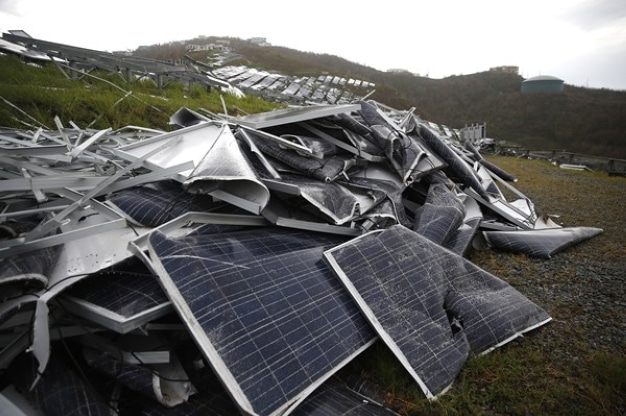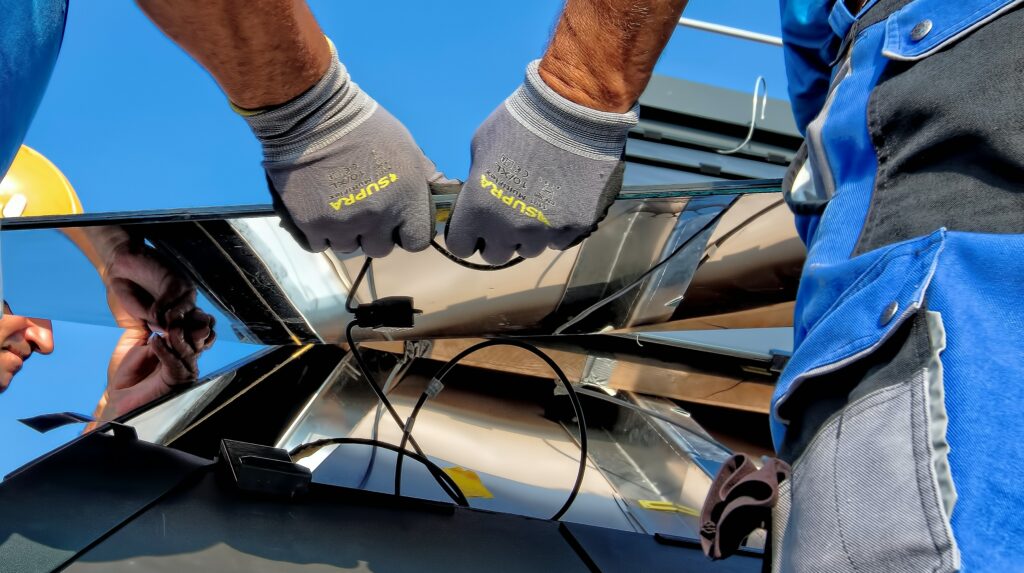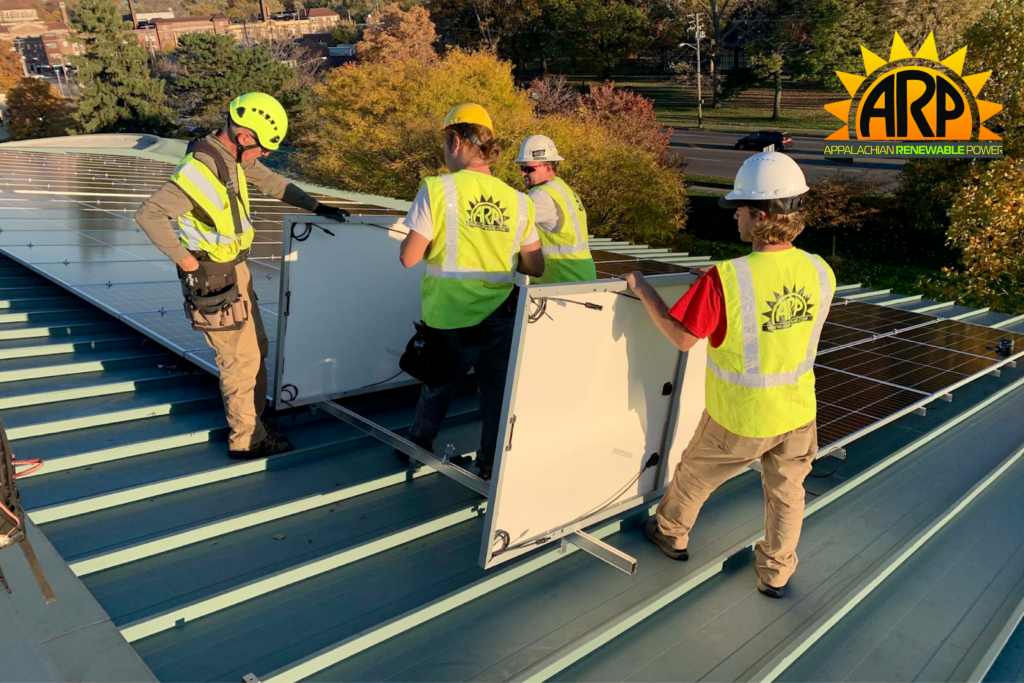Solar panels today typically are guaranteed to work at least 80% of their rated power for 20 to 30 years–but what happens once their efficient solar power producing lives come to an end, and is solar panel recycling viable? These questions are especially important as the wave of solar panels that have been installed over the last decade move closer to their eventual replacement dates, and older, less efficient panels could be swapped out now well before their “best-before” date. The amount of solar panel waste is expected to increase exponentially from less than 250,000 tons in 2020 to over 1 million tons by 2030 and over 10 million tons by 2050.
For this reason, recycling solar panels is one of the greatest challenges the solar industry faces both right now and into the future. Experts suggest that the value of reusable materials in solar panels past their prime could reach $15 billion by the year 2050.
So what does this mean for solar installers and O&M firms, many of whom are highly tuned in to the sustainability of their supply chains and waste streams? Here’s a look at the solar panel recycling process and options your company has for recycling solar panels when you replace existing solar installations.
Why and How are Solar Panels are Recycled?
Solar panels contain a number of valuable elements that could potentially be re-used to make future panels from recycled materials. For example, rare earth elements such as gallium and indium are typically used in the photovoltaic cells of solar panels, while copper wire and solar grade silicon are used in panels’ wiring. Silver is also a recoverable metal. Importantly, these elements are typically produced by mining, which is expensive and will become more so as the earth’s supply of these elements is further depleted.
However, recycling solar panels isn’t a simple process since many of these valuable elements are distributed throughout the panel and bonded with other components. Right now, taking apart a solar panel to recover rare earth elements, copper, silicon, glass, and other parts requires a labor-intensive and expensive process. Silicon-based PV panels need to have the silicon wafers scraped away and then melted down, while thin-film PV panels require washing with acid to remove the film.
Still, solar panels can be recycled, and most of the materials from the panel reused. As the number of solar panel installations grow, recycling materials will become more important for the environment as well as less expensive as the industry scales up.
Incentives for Recycling
Because of the costs involved, recycling solar panels isn’t really a money-maker. So, there need to be some incentives to incorporate it into your operations. At least for now in the US, there are few regulations that require recycling solar panels, although Europe has put in place regulations that require all solar panels to be at least partially recycled.
In addition, there is little data about demand from consumers that their old panels are recycled. But pressure could increase as more and more panels reach the end of their lives and press coverage of waste from the solar industry ramps up.
In the meantime, the main incentives are to help the environment–something that most renewable energy companies can get behind–and to protect the industry from future backlash by regulators or the public. For this reason, many of the recycling initiatives in the US are being driven by solar panel manufacturers themselves.

How Can You Recycle Solar Panels?
Most installers are doing more first-time installations than panel replacements right now. But that may change in the coming years as homeowners and companies that made the switch to solar early need their panels upgraded. So, how can your company recycle the old solar panels that you pull off these PV systems?
At the moment, Europe has the best market in place for recycling solar panels because of countries’ requirement that all solar panels be at least partially recycled. Veolia, in France, currently has the world’s only facility dedicated fully to recycling solar panels and is anticipating processing 4,000 tons of panels per year by 2022.
In the US, solar panel recycling is not yet as robust but there are still options. Recycle PV will actually pick up solar panels from your company in order to recycle them at one of their facilities; all you have to do is contact them when you have waste panels. The Solar Energy Industry Association also offers recycling services for their members and is working on developing further resources for recycling to be used across the industry.
As mentioned, US solar panel manufacturers also have mechanisms in place for recycling solar panels that they produce. For example, SunPower and First Solar run recycling programs that your company can take advantage of if you have old solar panels made by either company. You can also get in touch with PV Cycle, a nonprofit that helps recycle solar panels, in order to find out if you have solar panels that are eligible for manufacturer recycling.
Managing Your Own Recycling Field Processes and Workflow
Solar panel recycling is an essential part of the overall solar environmental impact equation. It seems clear that recycling is part of the industry’s future– without it, solar panel waste will build up to critical levels over the coming decades and essential elements will become even more expensive. Accordingly, the solar industry in both the US and in Europe is making strides towards increasing the efficiency and scale of panel recycling.
Although the infrastructure for recycling solar panels is still in its early stages, your company can get ahead of the curve by knowing how to navigate the world of panel recycling when you need to upgrade an existing installation. Unfortunately, recycling solar panels is not yet simple–but that doesn’t mean your company should skip this step. Removal and replacement of panels is like any other field process: you want your field team to follow the same consistent process every time and with maximum efficiency.
If you haven’t already, look at researching and standardizing your procedures for managing the recycling process all the way from removing old panels to having them picked up or shipped to a recycling facility. By starting to plan now, you can be in a solid position to take advantage of the pending demand for recycling panels.
Interested in learning more about solar power and the environment? Check out this blog on Solar Energy Solutions for Developing Countries. Or click here to learn how to recycle solar panels in the United States.

Solar Panel Recycling FAQ
How do you recycle solar panels USA?
There are different methods to recycle solar panels, which can include some or all of the following three steps:
- Removal of the frame and junction box;
- Separation of the glass and the silicon wafer through thermal, mechanical or chemical processes; and/or
- Separation and purification of the silicon cells and specialty metals (e.g., silver, tin, lead, copper) through chemical and electrical techniques.
Can you recycle lithium ion batteries?
Yes, but you must recycle lithium-ion batteries with care. Qualified technicians must disassemble batteries into modules using insulated tools to avoid electrocution or short-circuiting the pack. As a consumer, you must find a qualified e-waste recycler that can handle lithium-ion batteries safely and responsibly.


